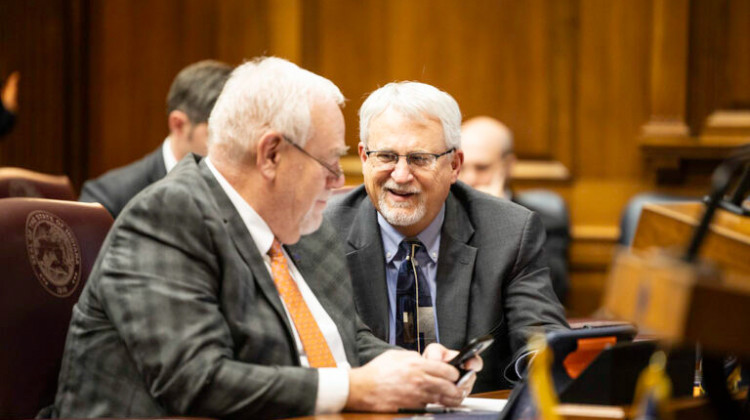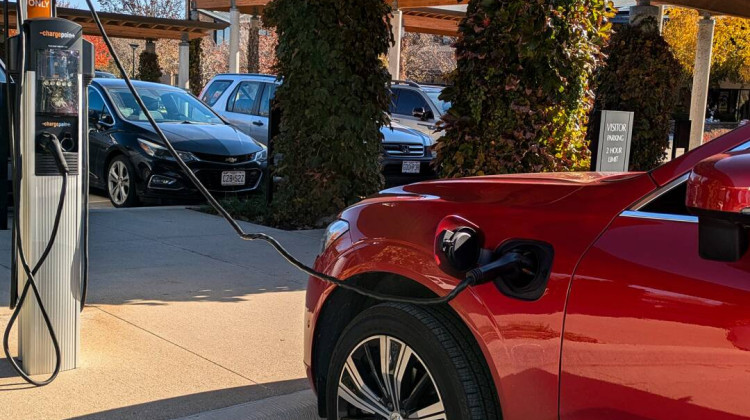
A view from above of the Crescent Dunes Solar Energy Project, a concentrated solar power plant in Nevada, 2014.
Amble/Wikimedia CommonsCritics of solar power often point out that unlike coal or natural gas, it isn’t always available when the sun isn’t shining. But one type of solar power plant can be dispatched to the grid almost as easily as fossil fuels — the problem is, it’s expensive. Purdue University researchers are looking into ways to lower those costs, which would make these plants competitive.
Concentrated solar power plants use mirrors to focus sunlight on a small area, creating heat used to make electricity. But instead of storing energy in batteries, it stores it in something cheaper — salt.
“As a result, if you don't need the electricity at a given time, you can heat up the salt and just save it basically for when the sun isn't shining, when it's cloudy, or when there is a big demand," said Ken Sandhage, professor of materials engineering at Purdue.
Sandhage said while it’s cheaper to store energy at a concentrated solar plant, it’s more expensive to set it up and run it reliably — but there is a way to make these plants more efficient.
“To get the cost of creating electricity down, you want to run these systems hotter — run the turbine hotter and everything upstream of the turbine hotter, because you can create more electricity by running the turbine hotter," he said.
Purdue researchers have found a family of sea salts that can stay stable under higher temperatures.
Sandhage said even though almost every piece has to be redesigned to withstand the heat, he believes it's possible with more research and continued funding.
"I think myself and many people working in this field can see the light at the end of the tunnel, so to speak," he said. "But it's going to require solving these problems, which I think very much can be solved."
Contact reporter Rebecca at rthiele@iu.edu or follow her on Twitter at @beckythiele.
Indiana Environmental reporting is supported by the Environmental Resilience Institute, an Indiana University Grand Challenge project developing Indiana-specific projections and informed responses to problems of environmental change.
 DONATE
DONATE






 Support WFYI. We can't do it without you.
Support WFYI. We can't do it without you.